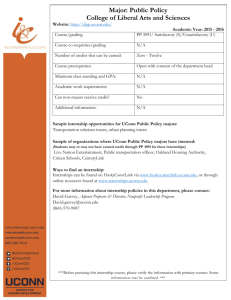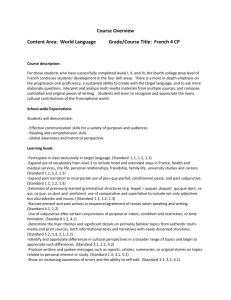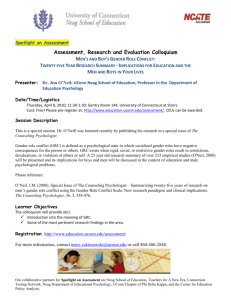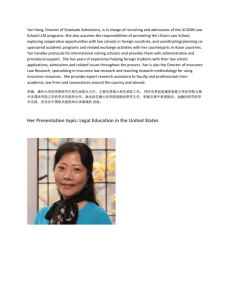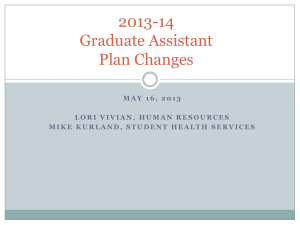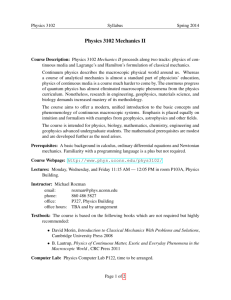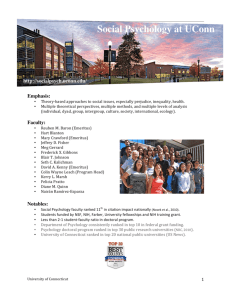BIO1108 - UConn Early College Experience
advertisement
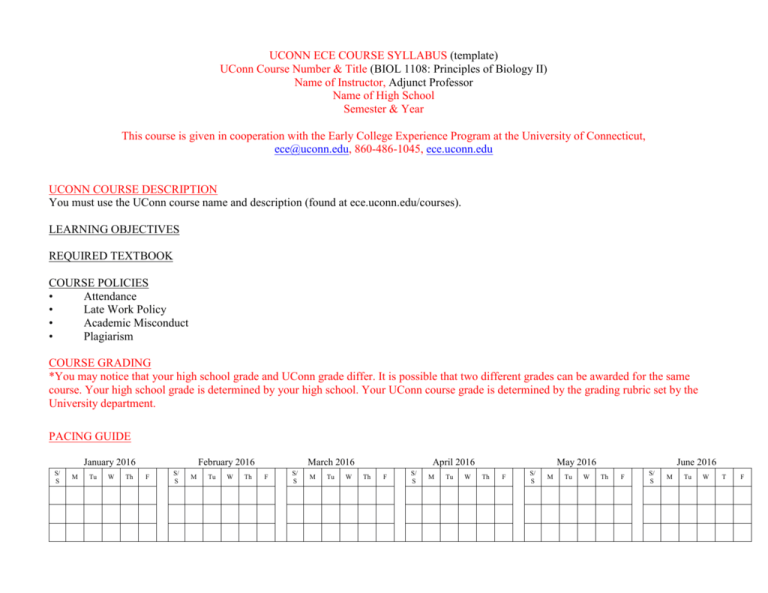
UCONN ECE COURSE SYLLABUS (template) UConn Course Number & Title (BIOL 1108: Principles of Biology II) Name of Instructor, Adjunct Professor Name of High School Semester & Year This course is given in cooperation with the Early College Experience Program at the University of Connecticut, ece@uconn.edu, 860-486-1045, ece.uconn.edu UCONN COURSE DESCRIPTION You must use the UConn course name and description (found at ece.uconn.edu/courses). LEARNING OBJECTIVES REQUIRED TEXTBOOK COURSE POLICIES • Attendance • Late Work Policy • Academic Misconduct • Plagiarism COURSE GRADING *You may notice that your high school grade and UConn grade differ. It is possible that two different grades can be awarded for the same course. Your high school grade is determined by your high school. Your UConn course grade is determined by the grading rubric set by the University department. PACING GUIDE January 2016 S/ S M Tu W Th February 2016 F S/ S M Tu W Th March 2016 F S/ S M Tu W April 2016 Th F S/ S M Tu W May 2016 Th F S/ S M Tu W June 2016 Th F S/ S M Tu W T F Unit Title/Chapters/Pages Unit Title/Chapters/Pages Unit Title/Chapters/Pages Unit Title/Chapters/Pages Unit Title/Chapters/Pages Unit Title/Chapters/Pages Tests/Dates Tests/Dates Tests/Dates Tests/Dates Tests/Dates Tests/Dates Disclaimer: I reserve the right to change this syllabus at any time Note: Red is required *If applicable, you must inform your students that the high school and college grades may differ. *Note to instructors from Biology Faculty Coordinator http://www.ascd.org/publications/educational-leadership/oct08/vol66/num02/Pacing-Guides.aspx Pacing guides are not an inherently bad idea. Their effects depend on their design and how district and school leaders use them. The best pacing guides emphasize curriculum guidance instead of prescriptive pacing; these guides focus on central ideas and provide links to exemplary curriculum materials, lessons, and instructional strategies. Guides like these embody what many experienced teachers do when they plan their curriculum for the year: They chunk it, put topics in a sensible order, determine what resources to draw on, and develop a good sense of how long different elements will take. They also allow for some unpredictability depending on their particular mix of students. Constructive pacing guides assume differences in teachers, students, and school contexts. They adjust expectations through frequent revisions based on input from teachers. Most important, they encourage instruction that challenges students beyond the content of the test.

